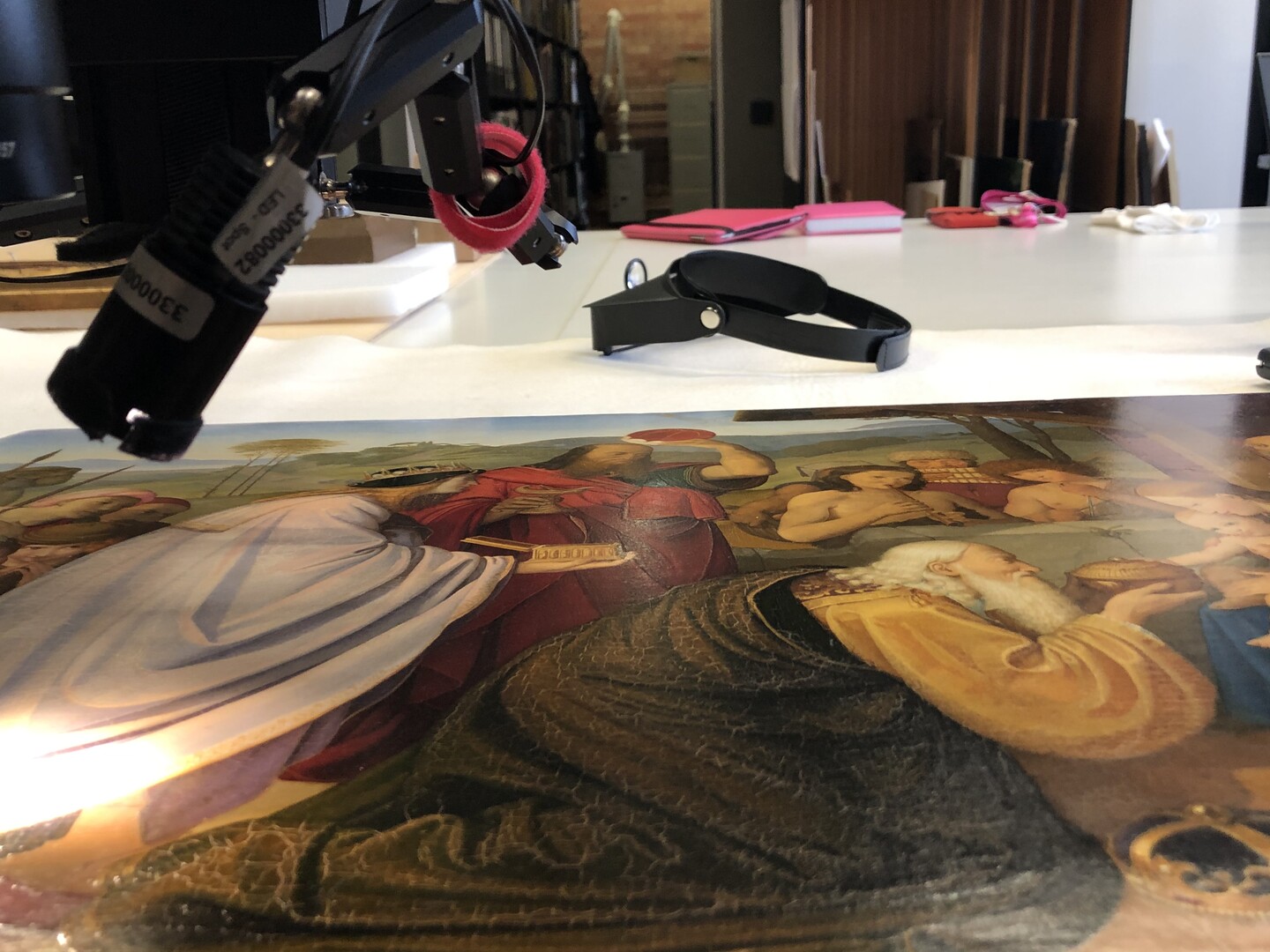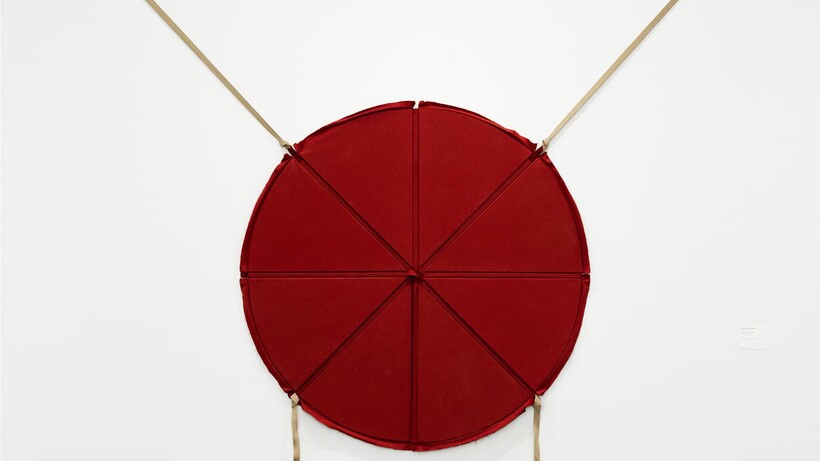Support conservation
Help us to preserve masterpieces – and do your part for future generations!
DONATIONS ACCOUNT HAMBURGER KUNSTHALLE
Hamburg Commercial Bank
IBAN: DE13 2105 0000 0101 8730 00
BIC: HSHNDEHHXXX
Why your support is so important
The Hamburger Kunsthalle – Hamburg’s largest art collection – is the guardian of immeasurable art treasures. In order to preserve these valuable works for posterity, we are dependent on continuous support.
Our aim is to build up a strong conservation fund through many smaller and larger donations. Every donation contributes to the overall success and demonstrates that people can achieve great things when they all pull together. It is this collective effort that makes it possible to achieve our goal of preserving our cultural heritage.
- Restoration, conservation and art technology for maintaining the collection
Along with collecting, researching and educating the public, preserving art objects for posterity is a vital task of every museum. Highly qualified museum conservators ensure the care and preservation of the collections entrusted to them.
As early as the 1890s, a first position for the conservation and restoration of works on paper was established in the Hamburger Kunsthalle’s Department of Prints & Drawings. There has also been a studio for painting conservation since 1919. Today, a total of seven conservators work at the Hamburger Kunsthalle – three for paintings, two for works on paper and photography, and two for contemporary art. The collection they look after comprises around 3,500 paintings, 1,000 sculptures and installations from 700 years of art history. The Department of Prints and Drawings today houses more than 130,000 drawings, prints and photographs spanning the fifteenth century to the present.
Works of art are not only an expression of artistic mastery but also sensitive treasures that can be damaged over time by environmental influences – light, moisture, pollutants, temperature fluctuations, etc. – as well as by natural ageing processes and previous attempts at restoration. The conservation and restoration of these works requires specialised expertise, modern technologies and thus considerable financial resources.
Our collection comprises valuable paintings, sculptures, photographs, video works, works on paper and other types of art. These varied types of artworks must be carefully cared for in order to protect them from decay. Conservation measures such as climate control and safety precautions as well as direct restorations are costly but essential to preserving the artworks for future generations. Equally crucial and therefore an important part of the conservator’s work is art-technological research in collaboration with experts and scientists from various disciplines.- Your support makes a difference
Our mission as a museum is to preserve the works of art entrusted to us for future generations through continuous care and restoration. The work of our conservators is demanding and complex. They face a variety of challenges that call for technical knowledge, creative problem solving and a deep understanding of art history. Their tasks are associated with specific costs:
Continuous care and conservation: We need to develop strategies to protect works of art in the long term:
- Comprehensive documentation of the measures implemented
- Constant monitoring, maintenance and taking protective measures as appropriate
- Implementation of suitable storage and exhibition techniques
Techniques and materials: Works of art are often made of diverse materials that can react differently and change over time, necessitating:
- Thorough material analysis to understand the composition of the materials used
- Selecting the right restoration techniques and materials
- The use of high-quality restoration materials that have no adverse effects. The wrong choice can lead to irreversible damage
Technology and interdisciplinary cooperation: State-of-the-art technologies enable precise and gentle restorations:
- Continuous training in the latest methods
- Purchasing advanced tools and equipment
- Hiring external service providers, for example for infrared images
- Consulting and putting together interdisciplinary expert teams including chemists, physicists and other specialists
- Examples of past projects that we were able to realise thanks to funding
- Research project to identify and technologically investigate plastics in contemporary art
- Numerous restorations of artworks as well as frames
- Anita Rée: An art-technological examination of around 70 works on paper and 26 paintings in order to record and document the drawing and painting materials used by Anita Rée, associated special features such as the use of bronze powders and collage elements as well as technical developments in her creative work
- 2014: Restoration of Wassily Kandinsky’s White Dot (1923), 12,000 euros
- 2014: Restoration of Ernst Wilhelm Nay’s The Source (1947), 30,000 euros
- 2014: Rebecca Horn, Chorus of the Locusts 1 (1991), 40,000 euros
- 2024: Purchase of a microscope
- 2021 Restoration of four miniatures by Ernica Fiorini-Narducci (1806–1892)
- 2021 Cleaning of the Raphael sculpture in the outdoor areah
- Material technology studies of four drawings by Leonardo da Vinci
- Purchase of five new frames for works by Caspar David Friedrich
- Purchase of a frame for and restoration of Quiringh van Brekelenkam’s The Letter
How your donation helps
To master these challenges, we need the support of many people. Your contribution goes directly into our conservation fund and helps to secure the necessary resources for the maintenance of our collection. Your donation has a direct and tangible impact:
- Preservation of the collection: It helps us to preserve and restore the works in our collection. Through continuous care and restoration, these works of art can be preserved for future generations.
- Expanded access: Restored artworks can be featured in our collection presentations, exhibitions and educational programmes, giving more people access to these cultural treasures.
- Art technological research: By applying modern scientific methods, museums can find out which materials and techniques were used in works of art and learn how they were made. Art technological studies help us to gain new insights into the artistic processes of past epochs and expand our understanding and knowledge of art history.
You can support us with one-off or regular donations. A long-term partnership or a bequest to the museum also makes a lasting contribution.

